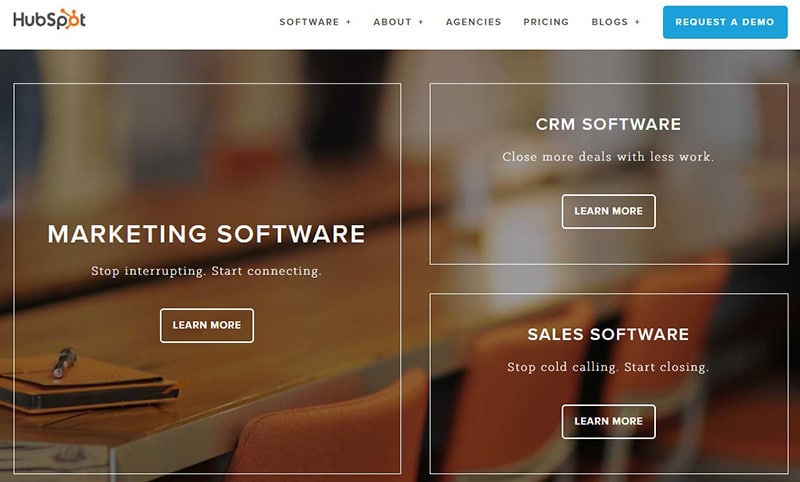Marketing software is a powerful tool that can revolutionize the way businesses connect with their audience and drive results. Implementing marketing software effectively is crucial for maximizing Return on Investment (ROI) and achieving business goals. From automated email campaigns to customer relationship management systems, marketing software offers a wide range of functionalities designed to streamline processes and enhance marketing efforts. In this comprehensive guide, we will delve into strategies for effectively implementing marketing software to boost efficiency, improve campaign performance, and ultimately increase ROI. Dive into this expert resource to gain valuable insights and guidance on leveraging marketing software successfully for your business.
Understanding ROI in Marketing Software
Importance of ROI in Marketing
Return on Investment (ROI) is a key performance indicator for any business action, particularly in marketing. It measures the profitability of an investment, helping businesses understand the effectiveness of their marketing efforts in monetary terms. A positive ROI signifies that the marketing strategies are generating more revenue than the cost incurred on them. This indicator is essential as it directly correlates marketing activities with the company’s financial performance.
Tracking ROI allows marketers to justify the budget allocated to marketing software and other initiatives. It also provides insights into which strategies are working and which are not, enabling data-driven decisions. In a landscape where every dollar counts, recognizing the importance of ROI ensures that businesses are making informed choices, focusing on strategies that contribute to both short-term successes and long-term growth.

Calculating ROI for Your Business
Calculating ROI for your business involves a straightforward formula: subtract the cost of the investment from the gain obtained from it, then divide this total by the investment cost, and multiply by 100 to get a percentage. For marketing software, this means taking the revenue generated from campaigns executed using the software, subtracting the cost of the software itself, and any additional expenses incurred during its implementation.
However, the calculation can be nuanced, as gains from marketing software are not always immediate or direct. Long-term benefits such as customer lifetime value, brand awareness, and customer loyalty should also be considered. It’s critical to set clear objectives and identify key performance indicators (KPIs) for each campaign to accurately measure its impact. Additionally, advanced analytics provided by marketing software can provide more in-depth insights, making ROI calculation more precise and reflective of your business’s performance.
Exploring Marketing Software
Different Types of Marketing Software
The marketing software landscape is vast, with various tools designed to address specific functions within marketing strategies. First, there are Customer Relationship Management (CRM) systems that help manage and analyze customer interactions throughout the customer lifecycle. Email marketing platforms enable businesses to create, send, and track email campaigns with ease. Social media management tools assist in scheduling posts, analyzing social media traffic, and engaging with followers.
Additionally, marketing automation software streamlines marketing workflows by automating repetitive tasks, such as lead nurturing and scoring. SEO tools are essential for optimizing website content to improve search engine rankings, while analytics platforms provide valuable data insights to inform strategy and decision-making. Content management systems (CMS) allow for the easy creation and management of digital content. Selecting the right mix of these tools is crucial for an integrated marketing approach that maximizes ROI.
What to Look for in a Marketing Software
When selecting marketing software, it’s important to consider several key factors to ensure it meets your business’s needs. Scalability is crucial; the software should grow with your business, handling increased capacity as your marketing efforts expand. User-friendliness is another important consideration; the platform should have an intuitive interface that your team can navigate with ease.
Integration capabilities are also essential. The software must be able to seamlessly integrate with other tools and systems you are currently using, such as CRM or analytics platforms. Additionally, look for software that offers robust analytics and reporting features, providing detailed insights into campaign performance and customer behavior.
Finally, consider the support and training that comes with the software. Reliable customer support and comprehensive training resources can significantly ease the implementation process and ensure your team is able to leverage the software to its full potential.
Innovation in Marketing Software Space
The marketing software space is continuously evolving, with innovation being driven by the need to better understand and engage with customers. Artificial Intelligence (AI) and Machine Learning (ML) are at the forefront, enabling predictive analytics and personalized customer experiences at scale. These technologies help in forecasting trends, optimizing campaigns, and providing insights that humans might overlook.
Chatbots and virtual assistants have become commonplace, providing instant communication with customers and improving service efficiency. Voice search optimization is another area where innovation is rapidly advancing, as more consumers use voice-activated devices to find information.
Augmented Reality (AR) and Virtual Reality (VR) are also emerging in the marketing software realm, offering immersive experiences that can captivate customers and create deep brand connections. As these technologies develop, they promise to open up new avenues for customer engagement and redefine what is possible in marketing.
Effective Strategies for Implementing Marketing Software
Analyzing Your Marketing Needs
Before implementing any marketing software, a thorough analysis of your marketing needs is essential. Start by reviewing your marketing goals and objectives. What are you trying to achieve? Whether it’s increasing brand awareness, generating leads, or driving sales, your goals will guide the type of software you need.
Consider your current marketing processes and pinpoint areas that require improvement. Are there tasks that could be automated? Is customer data being effectively utilized? Identifying inefficiencies can help you choose software with the right features to address these issues.
Understanding your target audience is also key. Different customer segments may require different engagement strategies. Ensure the software you select can help you reach and engage your audience effectively.
Lastly, consider your budget. While it’s important to invest in marketing, the software must offer a good balance between cost and features.
Integrating the Software in your System
Integrating new marketing software into your existing system requires careful planning. The first step is to ensure that the software is compatible with your current infrastructure. Check for any technical requirements that may necessitate upgrades or changes to your hardware or other software systems.
Next, map out your data flows. Determine how information will be transferred between the new software and your existing databases. It’s important to maintain data integrity and security during this process, so consider any necessary encryption or compliance standards.
It’s also beneficial to establish a phased rollout plan. Begin with a pilot program to work out any kinks before implementing the software across the entire organization. This allows you to manage risks and make adjustments as needed.
Lastly, maintain open communication with your team and the software provider throughout the integration process. Support from the provider and feedback from your team are critical for a smooth transition.
Training your Team for the Software
Training is a critical component of successful marketing software implementation. Start by identifying team members who will become software experts. These individuals can then act as in-house trainers and support for other team members.
Create a comprehensive training program that covers all necessary aspects of the software. This might include basic functionalities, advanced features, and best practices for using the software effectively. Ensure the training is tailored to different roles within your marketing team, as they may interact with the software differently.
Consider a variety of training formats, such as in-person workshops, webinars, and self-paced online tutorials. This accommodates different learning styles and schedules.
Revisit the training periodically to refresh knowledge and introduce new features or updates in the software. Ongoing education is vital to keep your team proficient and make the most of the marketing software’s capabilities.
Maximizing ROI with Marketing Software
Utilizing Software Features to Boost ROI
To maximize ROI, it’s crucial to fully utilize the features of your marketing software. Automation is one of the most powerful features, allowing you to schedule campaigns, segment audiences, and send personalized messages, which improves efficiency and effectiveness. Use analytics and reporting tools to track campaign performance and gather insights into customer behavior and preferences.
Leverage A/B testing features to optimize your marketing messages and strategies. This can help you identify the most effective content, subject lines, or call-to-action buttons. Customer relationship management (CRM) functionalities are also essential; they help you maintain detailed profiles of your leads and customers, tailoring your marketing efforts to their needs and increasing conversion rates.
Finally, integrate your marketing software with other tools to create a cohesive ecosystem that provides a more comprehensive view of your marketing funnel, facilitating better strategic decisions and improving ROI over time.
Monitoring Software Performance Regularly
Regular monitoring of your marketing software’s performance is essential to ensure you are getting a good return on your investment. Set up dashboards or reports that highlight key metrics such as conversion rates, lead acquisition costs, and customer engagement levels. These metrics provide a snapshot of how effectively the software is aiding your marketing efforts.
It’s also important to track the software’s uptime and technical performance. Any issues that cause downtime can negatively impact your marketing campaigns and, consequently, your ROI. Keep an eye on system updates and maintenance schedules to plan accordingly.
Use the feedback from these monitoring activities to make informed decisions. If certain features are underutilized or not delivering the expected results, consider reconfiguring your setup or seeking additional training for your team. Continuous improvement in how you use the software will lead to better marketing outcomes and a higher ROI.
Adjusting Tactics based on Software Reports
The reports generated by marketing software are a goldmine of information that can help refine and adjust marketing tactics for better performance. Scrutinize the data to understand which marketing activities are driving results and which ones are not. Look for patterns in customer behavior, campaign engagement, and conversion rates.
Use these insights to shift your marketing spend towards the most effective channels and tactics. If the data shows that certain demographics respond better to specific types of content, tailor your campaigns accordingly. Similarly, if some keywords or marketing messages are performing exceptionally well, consider doubling down on those areas.
It’s also important to test new strategies based on these reports. Conduct controlled experiments with different variables and monitor how they impact your KPIs. By being responsive to the data, you can continuously optimize your marketing efforts and ensure that your tactics are as effective as possible in driving ROI.
Real-Time Cases of High ROI from Marketing Software
Top Businesses Leveraging Marketing Software
Several top businesses have demonstrated the power of leveraging marketing software to achieve high ROI. For instance, e-commerce giants like Amazon use sophisticated marketing automation tools to personalize recommendations for millions of customers, resulting in significant sales increases. Streaming services like Netflix employ analytics software to understand viewer preferences and deliver targeted content, enhancing customer retention and satisfaction.
On the B2B front, Salesforce has effectively used its own CRM software to maintain customer relationships and streamline its sales process, driving up sales productivity. HubSpot, a leader in inbound marketing, uses its comprehensive suite of tools to attract, engage, and delight customers, showcasing the effectiveness of integrated marketing platforms.
These examples illustrate that when businesses fully utilize the capabilities of marketing software to align with their strategic goals, they can significantly boost their ROI and solidify their market presence.
Success Stories: Marketing Software Enhancing ROI
Marketing software has been the cornerstone of numerous success stories where companies have seen substantial growth in ROI. A notable example is a small business that implemented email marketing software and saw a 200% increase in engagement within a few months, leading to increased sales. Another success story comes from a tech company that used marketing automation software to nurture leads, resulting in a 150% increase in qualified leads and a significant reduction in the sales cycle.
A retail brand harnessed the power of social media management tools to amplify its online presence and customer engagement, which directly correlated with a 120% increase in online sales. Additionally, a B2B company utilized SEO and content marketing software to improve its search engine rankings, effectively doubling its web traffic and boosting lead generation by 75%.
These stories underscore the transformative impact that marketing software can have on a company’s bottom line when strategies are well-executed and aligned with the business objectives.



![How Virtual and Augmented Reality will Influence Decision-Making [Infographic] | Guided Selling](https://www.guided-selling.org/wp-content/uploads/2016/06/generate_images_for_my_blog_post_post_title_is_-6.jpg)
